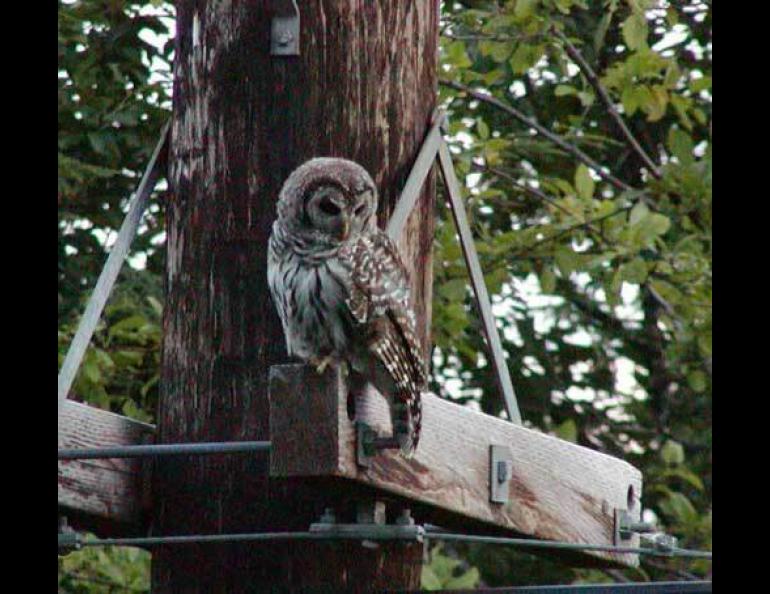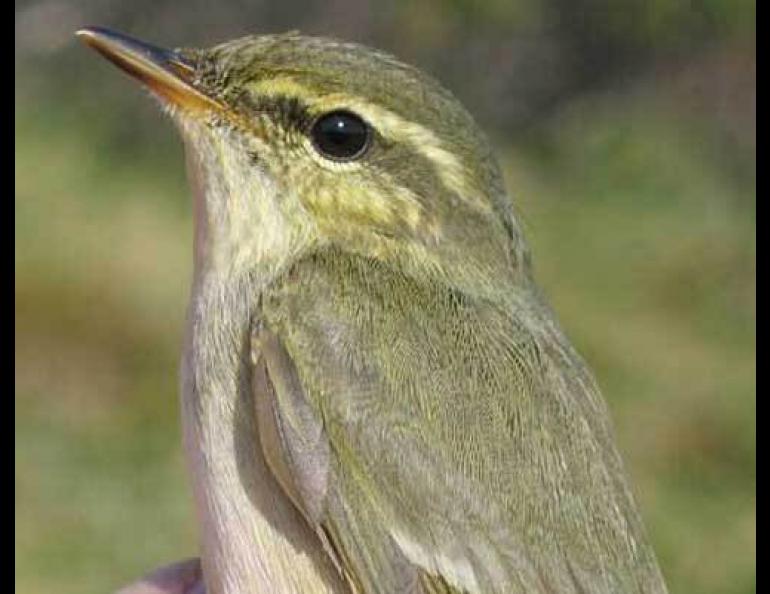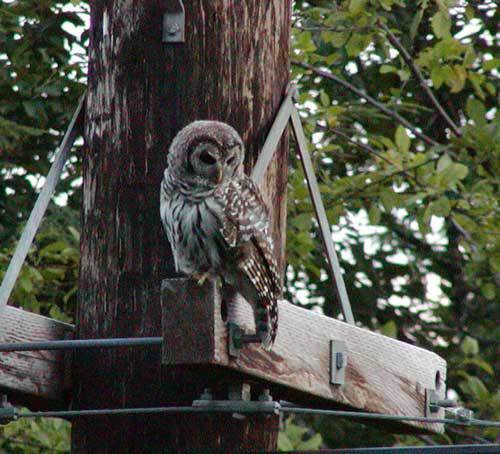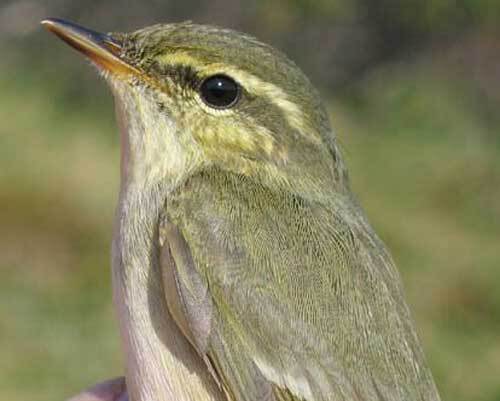
A barred owl in Juneau. Unknown in Alaska before the late 1970s, barred owls are now the second most-abundant owl in Southeast. Photo by Paul Suchanek.

Arctic warblers live off Alaska’s Denali Highway in the summer months. Photo by Ronald Teel.
The latest word on Alaska birds
Some news from the Alaska Bird Conference, held this spring in Fairbanks:
- The barred owl, once a rarity in Alaska, is now one of the most common owls in Southeast Alaska. The 20-inch owl with a call that sounds like “Who cooks for me? Who cooks for you all!” is a common forest resident east of the Great Plains, but has been on the move lately. In the 20th century, the owls expanded westward and northward, with the first documented sighting near Juneau in 1978. Michelle Kissling of the U.S. Fish and Wildlife Service in Juneau reported that researchers found about 13 barred owls from 1978 to 1990, but from 2000 to the present, they found more than 100, making the barred owl the second most common owl in Southeast. The most common owl in Southeast is the northern saw-whet owl, which sounds like the owl version of a large truck backing up.
- Arctic warblers don’t arrive at their summer homes off Alaska’s Denali Highway from their wintering grounds in the Philippines until June 7th or 8th, a full two weeks after most migrating birds reach Alaska, according to scientists with the Alaska Bird Observatory. Arctic warblers breed, hatch eggs, and watch their young fly away by the end of July. “These birds are arriving later, but their season is compressed,” said Susan Guers of the Alaska Bird Observatory, where researchers did a warbler study from 2004 to 2006.
- Some birds have patches of colored feathers on their bodies that other birds see as a sign of dominance, like huge antlers on a bull moose. Black-capped chickadees have patches of black feathers on their chest, sort of like a bib, that researchers think might be associated with a bird’s fitness (the larger the patch, the healthier the bird). Sarah Youngren and other students in an animal behavior class at the University of Alaska Fairbanks studied black-caps that came to feeders in winter at the Alaska Bird Observatory in Fairbanks. They found that birds with the smallest black patches on their chests were more aggressive at the feeder than other birds. Those birds with the smaller “badges” were usually the smallest birds, and their bodies had high levels of stress hormones. “The smaller chest badge . . . may provide a visual cue to other individuals by which to avoid aggressive interactions at a feeder,” Youngren wrote in an abstract for her talk. She and her fellow chickadee observers also saw a few birds with deformed beaks, a condition widely reported in Southcentral Alaska, but less common in the Interior. “Two birds with deformed beaks were the most aggressive,” Youngren said, saying that birds in poor shape were perhaps the most desperate for food. The two birds with twisted beaks probably didn’t survive a February cold spell in Fairbanks. Someone found one of them dead near the bird observatory feeder and the other one didn’t reappear after the cold snap. This seems to beg the question of whether people in northern areas don’t find more deformed chickadees simply because the birds don’t survive the extreme weather of the Interior.
- Is road construction good for peregrine falcons? That’s a question asked by Hank Timm, who works for the Tetlin National Wildlife Refuge in Tok. Since 1995, Timm has watched five pairs of peregrine falcons that have nested on manmade cliffs (three on road cuts, two on rock quarries). He found that those five nests, including one at a rock quarry used as a rifle range, have produced more baby peregrine falcons than natural cliff sites along the Tanana River. “We hypothesize that the energetic costs of frequent human disturbances at the roadside territories may be offset by abundant prey nearby and the ability of the birds to habituate to highway traffic,” Timm wrote.






